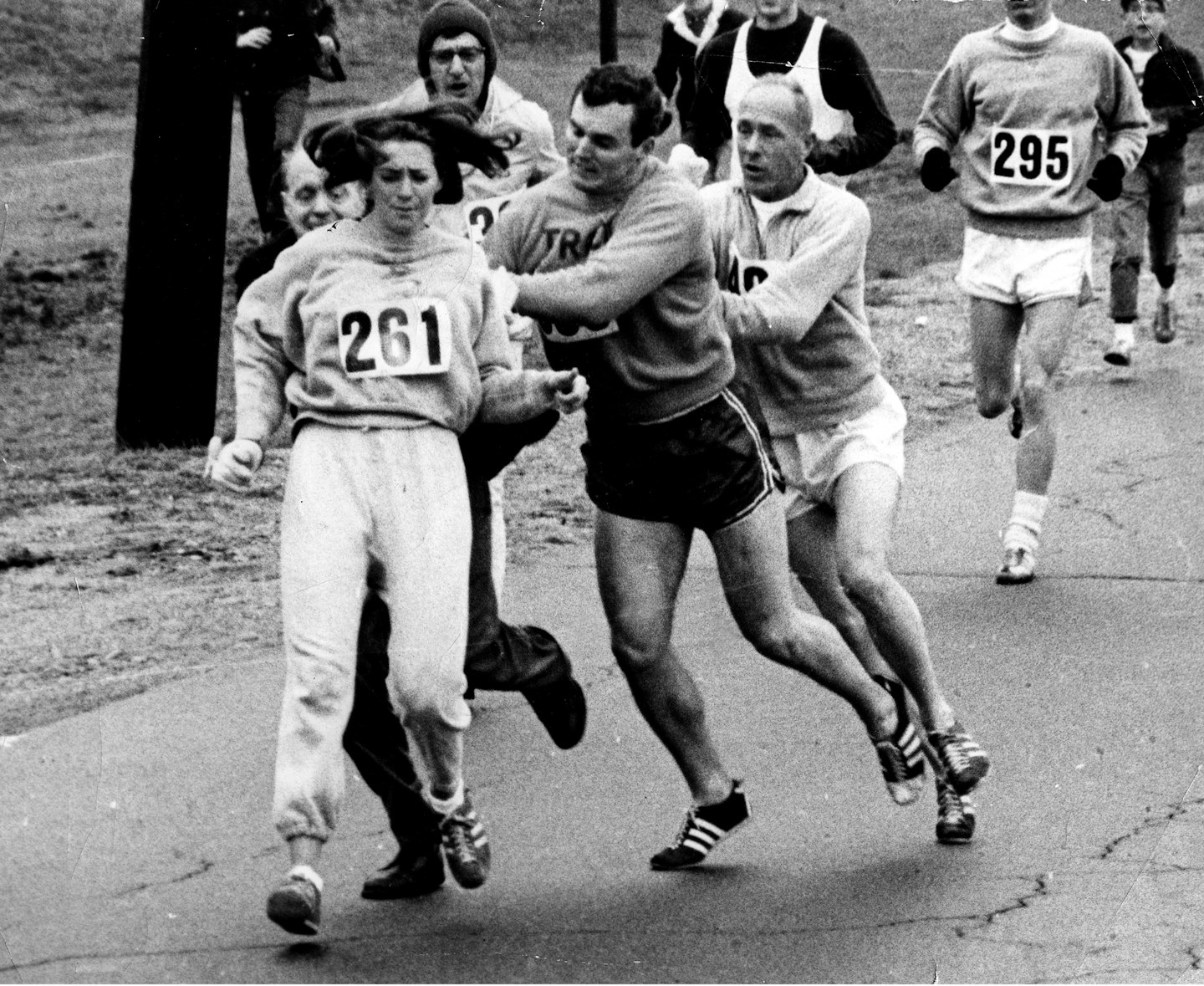Who is Kathrine Switzer?
Only a ruddy feminist icon, that’s who. Forget Sporty Spice, Kathrine was full on girl power before that was even a thing.
The back-story is that back in the good old misogynist 1960s, it was assumed that running was a man’s sport. In fact, the received wisdom was that running would rob women of their only attribute – that they could breed – and if a delicate flower was to so much jog to the bus stop her womb might fall out.
It sounds funny now, but there were serious rules barring women from sports, especially running races. The Boston Marathon was no exception, but in 1967 young Kathrine Switzer was a keen runner and wanted to take part – despite her coach telling her a marathon was too far for a ‘fragile woman’. So she took charge, and entered under the genderless name K V Switzer.

On the day itself, when race officials saw she was but a bosom-carrying baby-machine, they were furious. There’s a famous photo of a marshal trying to force her off the course at mile two, but thanks to a mixture of pluck and support from the male runners, she gave him the slip. She completed the course in an impressive 4 hours 20. Despite this, it was another five years until women were officially allowed to compete.
Meanwhile, Kathrine went on to complete 39 marathons, and win the New York City marathon in 1974, before creating a series of women-only races (the Avon International Running Circuit) across the world.
Kathrine is just one of a handful of brave women who entered races when it was forbidden, but what makes her so special is what she’s done with her notoriety. She established 261 Fearless(based on the number she wore at Boston) – a global community of female walkers, joggers and runners that’s all about sisterhood and encouragement. It’s no wonder that legions of female sports enthusiasts have had the number 261 tattooed on themselves as a reminder to always be brave.
This year, in her seventies, Kathrine once again took to the streets of Boston, but this time no one questioned her (or any other woman’s) place among the men.
